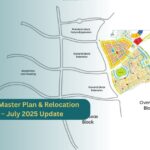In recent years, Islamabad has emerged as a rapidly growing hub for business and investment in Pakistan. With a thriving economy and a strategic location at the crossroads of South Asia, the city has attracted a large number of investors and entrepreneurs looking to tap into its potential. One of the most exciting developments in this regard is the Blue World Trade Center Islamabad, a visionary project that promises to transform the skyline of the city and become a symbol of its economic and cultural aspirations. In this article, we will take a closer look at the Blue World Trade Center Islamabad and explore its features, benefits, and potential impact on the future of Islamabad.
Introduction
Before we delve into the details of the Blue World Trade Center Islamabad, it is important to understand the context in which it is being built. Islamabad, the capital of Pakistan, has seen a significant increase in its economic activity in recent years, driven by a combination of factors such as government policies, infrastructure development, and a growing consumer market. According to the World Bank, Pakistan’s economy is expected to grow at a rate of 4.7% in 2021, with Islamabad playing a key role in this growth due to its status as a center for government, diplomacy, and commerce.
What is the Blue World Trade Center Islamabad?
The Blue World Trade Center Islamabad is a massive development project that is being built in the heart of Islamabad, near the iconic Faisal Mosque. It is a joint venture between the Blue Group of Companies, a leading real estate developer in Pakistan, and the Chinese construction firm NORINCO International. The project comprises several interconnected towers, with the main tower standing at a height of 501 meters, making it the tallest building in Pakistan and one of the tallest in the world.
Features and Facilities
The Blue World Trade Center Islamabad is designed to be a state-of-the-art facility that offers a range of features and facilities for businesses and residents. The complex will have over 75 floors, with a mix of commercial, residential, and leisure spaces. The lower floors will house a shopping mall, restaurants, and entertainment venues, while the upper floors will have offices, apartments, and hotel rooms. The complex will also have a conference center, a gymnasium, a swimming pool, and other amenities.
Economic Benefits
The Blue World Trade Center Islamabad is expected to have a significant impact on the economy of Islamabad and Pakistan as a whole. The project is estimated to cost around $2 billion, making it one of the largest foreign direct investments in the country. It is also expected to create thousands of jobs during the construction phase and after completion, as businesses and residents move in. Moreover, the complex will generate significant revenue for the government in the form of taxes and fees, while also contributing to the growth of other sectors such as tourism and hospitality.
Cultural Significance
Apart from its economic impact, the Blue World Trade Center Islamabad also has cultural significance for the people of Islamabad and Pakistan. The tower’s location near the Faisal Mosque, one of the largest mosques in the world, makes it a symbol of the country’s Islamic heritage and modernity. Moreover, the tower’s blue color, which is inspired by the traditional blue pottery of Pakistan, is a tribute to the country’s rich cultural heritage and craftsmanship.
Environmental Sustainability
As a modern and forward-looking development, the Blue World Trade Center Islamabad is also designed to be environmentally sustainable. The tower will use advanced technologies such as solar panels, wind turbines, and rainwater harvesting systems to reduce its carbon footprint and conserve resources. The complex will also have green spaces and public parks, which will enhance the quality of life for its residents.
Potential Challenges
While the Blue World Trade Center Islamabad has the potential to bring numerous benefits to Islamabad, it also faces some potential challenges. For example, some experts have raised concerns about the tower’s impact on the surrounding environment, particularly its potential to cause traffic congestion and strain on local resources such as water and electricity. Moreover, the project’s high cost and ambitious scale could make it vulnerable to delays or cost overruns, which could affect its viability in the long run.
Conclusion
In conclusion, the Blue World Trade Center is a visionary development that represents the aspirations of Islamabad and Pakistan for the future. It offers a range of features and facilities for businesses and residents, while also creating jobs, generating revenue, and enhancing the city’s cultural and environmental sustainability. However, it also faces some potential challenges, which will require careful planning and management to overcome. Overall, the Blue World Trade Center is a bold and exciting project that has the potential to transform the skyline of Islamabad and become a landmark for generations to come.










